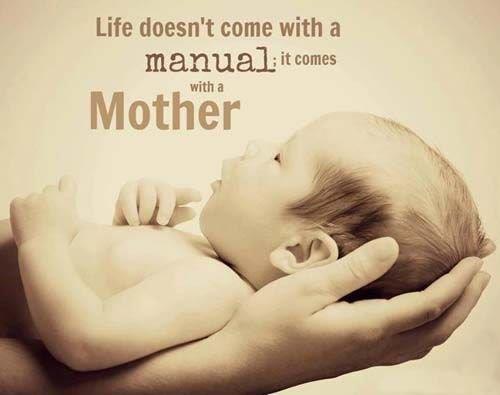Please listen to the All About Breastfeeding podcast show where I tell Suzanne’s story to help illustrate the points made in this blog. If you are not so much of a reader and prefer to listen and learn, this show is for you!
The First Week of Breastfeeding
 I find that many new parents do not fully understand normal newborn breastfeeding behavior. I also find that many new parents are left on their own when it comes to breastfeeding. I recognize I am making a blanket statement and stereo-typing, however, I do find that a majority of new mothers are not followed closely enough once the baby is born, at least with regards to breastfeeding. You are followed very closely for your prenatal care. Once the birth gets closer, you switch from monthly appointments to twice a month appointments to weekly appointments.You have plenty of opportunity to have all your questions answered and plenty of opportunity to feel comfortable with your care provider.
I find that many new parents do not fully understand normal newborn breastfeeding behavior. I also find that many new parents are left on their own when it comes to breastfeeding. I recognize I am making a blanket statement and stereo-typing, however, I do find that a majority of new mothers are not followed closely enough once the baby is born, at least with regards to breastfeeding. You are followed very closely for your prenatal care. Once the birth gets closer, you switch from monthly appointments to twice a month appointments to weekly appointments.You have plenty of opportunity to have all your questions answered and plenty of opportunity to feel comfortable with your care provider.
The day comes when you have your baby and you have lots of hands on care that first 12 – 24 hours. If you gave birth in a hospital and need a longer stay, this usually means more help for the duration of your stay. However, once you are home with your baby, and your helpers are not there, you are left alone with trying to figure out this breastfeeding thing. The weekly appointments are no longer and there can be a disconnect with regards to receiving individual help specifically with the one thing that is most important to you now – ensuring that breastfeeding is going well.
I want you to be empowered. I want you to know what you need to know, in order to be a partner in your babies healthcare. The early days of breastfeeding are quite time consuming, for many of us a common word we use to describe it is: overwhelming, extremely tiring and filled with lots of unknowns, which tend to make us feel unprepared and anxious. It is hard to remove the feelings of being incredibly tired as this is part of new motherhood. My goal is to everything I possibly can to reduce the feelings of being overwhelmed by familiarizing you with what to expect. This way you will know when to be a tired new mommy with little to no breastfeeding concerns or a tired new mommy with enough breastfeeding concerns to warrant making an appointment with an IBCLC.
It is important that you are aware of the answers to these questions:
1. What does normal newborn breastfeeding behavior look like?
2. What is normal weight loss in the first few days?
3. After any initial loss, what would I expect the gain to look like?
4. What is normal for their output? In the first day? second day? at 2 weeks?
5. How do I know if my baby is breastfeeding well?
6. How do I know if my baby is getting enough per feeding?
I remember being frustrated and quite alone in the early days of breastfeeding. I was having all sorts of problems with painful breastfeeding. I knew how to ask for help with that and even that was hard to find the right help. I felt alone and lost as the pediatric visits were not long enough or close enough for me to really get a handle on what I was doing, if it was going well, what signs was I looking for. She was deemed to be healthy and doing well. When I mentioned that breastfeeding was hurting, I walked out of the office with tears rolling down my cheeks because all I was told that it was normal and to just keep feeding and it will get better. I remember thinking that I did not know how long I could keep going being in this degree of pain. I was trying so hard to not cry in front of the Dr. so I fought to hold back my tears. I remember trying to make it past the checkout process without crying in front of the lady at the desk. I remember thinking.. just hold the tears back until you could get into your car. It was embarrassing for me to be seen crying. I remember one time my eyes were stinging so much and were welling up so much that I did not care how I looked with sunglasses on inside – I thought it was better than the alternative.
As I look back on those days, I realize that I could have been a better advocate for myself and my baby had I been aware of some important pieces of information. Then I could have asked more specific questions. I didn’t know what I didn’t know. Therefore, I was at a loss to what questions to ask. If I had asked the questions, frankly , I did not even know what the correct answers should be.
Here is the main points that I would like for you to know.
Day 1 – It will be great if you are not separated from your baby at all. This way, with your baby tucked in with you skin to skin, you can observe your babies feeding cues and be right there and available to help support your baby and bring your baby to the breast for the first feeding. Some babies have a huge interest in the first hour after birth, other babies take several more hours until they show an interest. They are more likely to root around if they are kept skin to skin. It would be within the normal range for your baby to show an interest in feeding, about 3-4 times the first 24 hours. Of course, if they are showing hunger cues more frequently than that, go ahead and feed your baby. Unless there is a specific medical reason to do so, do not be separated from your baby, or offer a pacifier or a supplement.
It would be normal for your baby to have 1 pee diaper and at least 1 stool. Pee diapers should always be a clear to light yellowish color. Stools the first day are dark black and sticky.
Breastfeeding: latch should be comfortable with you feeling a gentle tugging of your nipple as it slides back and forth inside your babies mouth. Any sensation of feeling like your baby is biting or pinching or squeezing your nipple, lets us know that the latch could be better. This is a clear sign to request lactation help.
Breastfeeding: Your should notice that your baby has a rhythm to their sucking behavior. You should notice that there mouth opens and closes, opens and closes, opens and closes, in a rhythmic fashion several times, before pausing, and then begins again. A bunch of sucks, a rest of less than 1 minute, a bunch of sucks, a rest, a bunch of sucks, a rest, all while feeling a tugging sensation that is painless.
Time spent at breast is not as important as how effective your baby is a breastfeeding,, meaning staying awake and active and in a good rhythm. Your baby should not be falling asleep after a few minutes of feeding. It would be a fair guestimate to say that your baby should be in the actively sucking phase for about 15 – 20 minutes, usually on both sides to get a good feeding. However, This is not an exact science and I would not want you to get hung up on the time factor. Pay close attention to suckling rhythm and your comfort, babies activity at breast and output. These are paired with the length of time , rather than make the length of time at breast be the focus.
Day 2 – It would be normal for babies from this point on, to be interested to feed an average of 8 times per day, usually both sides. However, I would like to say again, the focus should be on your latch comfort level, babies suckling rhythm, no falling asleep and needing to be stimulated just to feed, your babies satiation level after a feeding, as well as the output and less about focusing on the time.
Output on Day 2 is 2 wet diapers and 2 stools, which are becoming lighter and less stickier.
Day 3 – Continued 8 feedings, moniter comfort level, babies activity at breast, and output and satiation level.
Output on Day 3 – 3 wet diapers and 2-3 stools, much lighter in color, possibly noticing some yellowish and consistency changes to looking a bit chunky or little sesame seed appearance. I know, this part sounds like lots of fun.
Day 4– Continued approx. 8 feedings, monitering all we talked about, 4 heavy wet diapers, and stools should have turned a yellowish color
Reasons to be concerned at this point:
1. If breastfeeding is making your nipples sore.
2. If your breasts are feeling sore, painful, unresolved lumps, engorged not relieving after feeding.
3. Baby wanting to feed 10 or more times in 24 hours.
4. Baby sleeping for longer than 4 hour stretches & getting less than 8 feeds a day.
5. Output less than what I have described.
6. 4 day weight check that shows your baby has lost more than 7 oz
7. 5 day weight check that shows your baby has not started to gain.
If you are experiencing any of these things, a full evaluation is warranted. Two or more of the above would tell me that you are likely experiencing breastfeeding that is not normal and you really should be seen.
None of this information should be taken in place of a scheduled lactation consultant with an IBCLC. I am just trying to give you a baseline from which to observe and assess if breastfeeding is going well or you need to be seen.
I am a pain in the tush because I want to help you avoid painful breastfeeding, too much weight loss and lack of output. I would much rather help you before all these signs become too significant. I tell parents all the t ime, of course we can still work on breastfeeding. It is definitely not too late. However, the fix is much easier, the sooner you get help.
I am grateful for this opportunity to Empower you about the early days of breastfeeding and what to expect and have you be an informed partner in your babies health care as it relates to breastfeeding. My goal is for you to have a happy, healthy, normal, comfortable relationship with your baby.
Please listen to the All About Breastfeeding podcast show where I tell Suzanne’s story to help illustrate the points made in this blog. If you are not so much of a reader and prefer to listen and learn, this show is for you!


